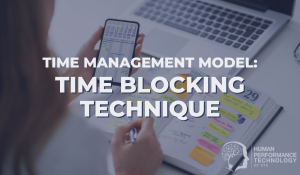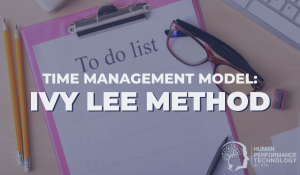Time Management Model: The Eat That Frog Method
The Eat That Frog method is a time management model developed by author and speaker Brian Tracy. The method is based on the idea that if you “eat the frog” or tackle your most challenging or important task first thing in the morning, the rest of your day will be more productive and less stressful.
To apply the Eat That Frog method time management model, you can follow these steps:
- Identify your Most Important Tasks - Determine the tasks that are most important for achieving your goals, and prioritise them.
- Identify your “Frog” - The “frog” is the task that you dread the most, but is also the most important task. Identify the task that you have been avoiding or procrastinating on.
- Eat the Frog - Tackle the most difficult task first thing in the morning before you do anything else. This will help you build momentum and create a sense of accomplishment.
- Break Tasks into Smaller Chunks - If a task seems overwhelming, break it into smaller, more manageable tasks. This will make it easier to get started and make progress.
- Eliminate Distractions - Eliminate or minimise distractions that can pull you away from your work. Turn off notifications on your phone and computer, and close unnecessary tabs or windows.
- Track your Progress - Keep track of your progress and accomplishments, and celebrate your successes along the way. This will help you stay motivated and focused on your goals.
By following these steps, you can use the Eat That Frog method to prioritise your tasks, overcome procrastination, and improve your productivity. The method is designed to help you tackle your most important tasks first and build momentum for the rest of your day.
When is the Eat That Frog method most useful?
In our post “10 Super Useful Time Management Models”, we introduced the idea that time management models can usually be organised into three categories; Planning, Prioritising and Executing. We would consider the Eat That Frog method an Executing model.
The “Eat That Frog” method is most useful when you need to overcome procrastination and tackle difficult or unpleasant tasks. The idea behind the method is to identify the task that you are least looking forward to, the one you are likely to procrastinate on and tackle it first thing in the morning.
By completing the most challenging task of the day first, you can gain a sense of accomplishment and motivation to tackle the rest of your tasks. It also helps to remove the mental blockage that often comes with putting off unpleasant tasks, which can free up your mind to focus on other important things.
The “Eat That Frog” method can be particularly useful when you are feeling overwhelmed by your to-do list, as it can help you to break the cycle of procrastination and get back on track. It is also a great way to build discipline and self-motivation, which can help you to become more productive and achieve your goals more effectively.
What are the common challenges when people use the Eat That Frog method?
Common challenges that people may face when using the Eat That Frog method include:
- Difficulty in Prioritising Tasks - Some people may find it challenging to identify which task is the most important or urgent and may end up procrastinating.
- Lack of Motivation - It can be difficult to motivate oneself to tackle a challenging task, especially if it is something that one does not enjoy doing.
- Overwhelming Workload - The method may not work well for people who have a heavy workload or a lot of tasks that need to be done within a short period of time.
- Inability to Focus - Some people may find it hard to concentrate on one task at a time and may end up multitasking instead.
- Failure to Break Down Tasks - Breaking down large tasks into smaller, manageable ones is essential for the method to work effectively. However, some people may find it difficult to do this.
- Distractions - External distractions such as social media, email, or phone calls can disrupt the method and make it hard to stay on track.
- Lack of Flexibility - The method may not be suitable for people who need flexibility in their schedule or cannot stick to a strict routine.
- Fear - Fear of the unknown or the most difficult task.
- Avoidance - Avoiding the most unpleasant task.

Trevor O'Sullivan
General Manager. Since the early 2000s, Trevor has worked with thousands of Talent Management professionals to develop and apply assessment-based talent management solutions for selecting, developing and managing people. Trevor is an active member of the TTI Success Insights (TTISI) Global Advisory Council, contributes to TTISI product development and is a regular presenter at TTISI-R3. He is honoured to have received multiple Blue Diamond Awards and, more recently, the Bill Brooks Impact Award recognising his contributions to the TTISI global network.



We Would Like to Hear From You (0 Comments)